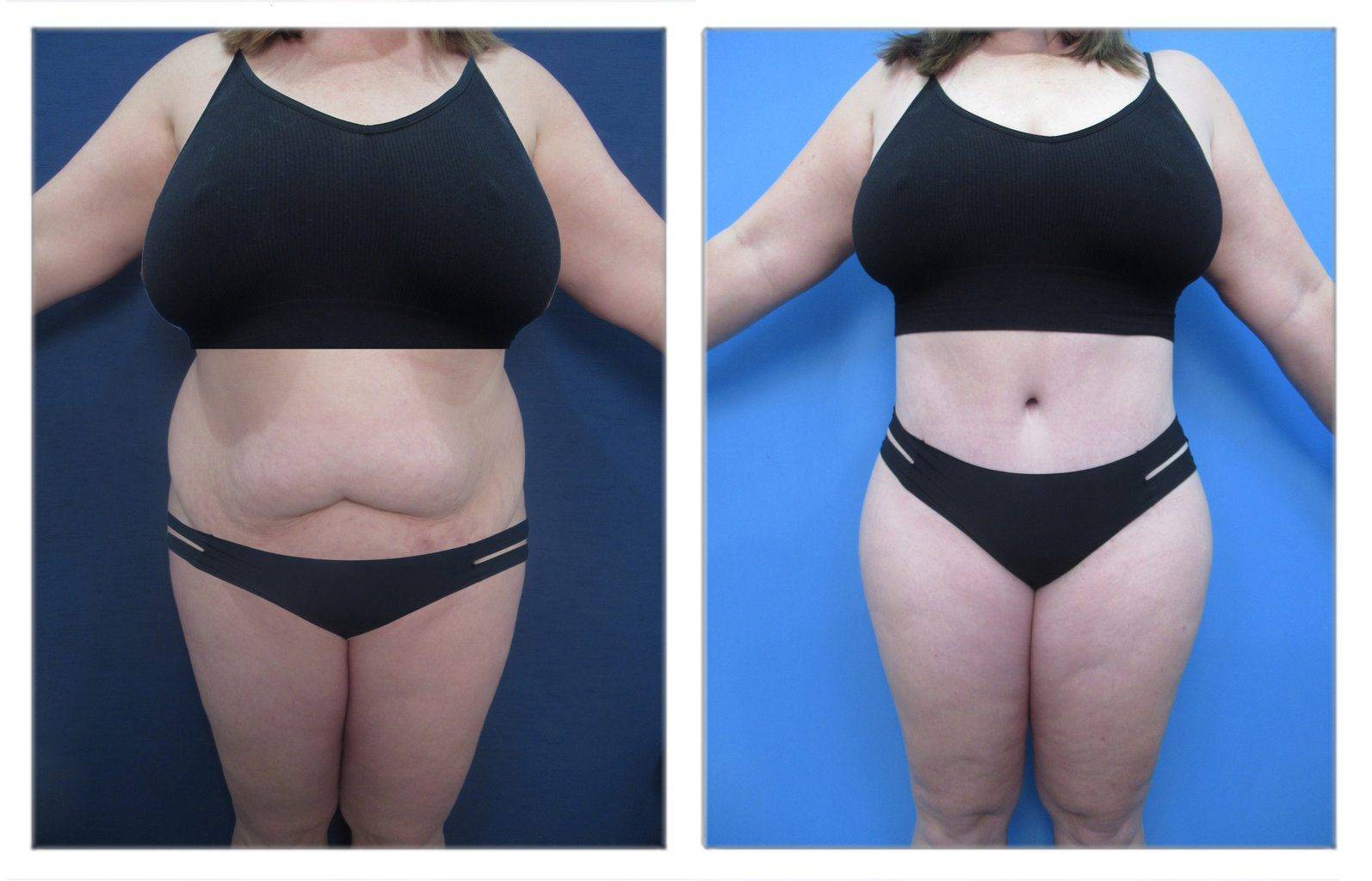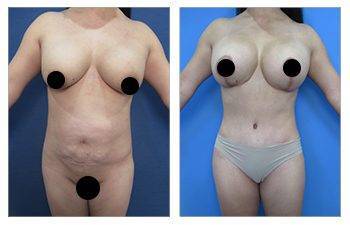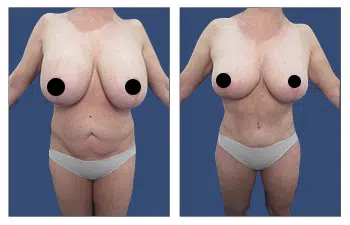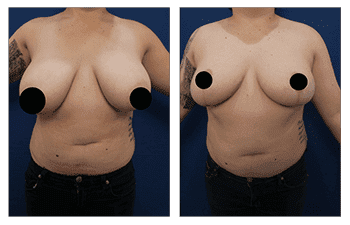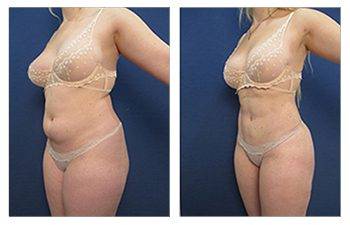BREAST LIFT
breast lift Surgery CASE STUDIES
Introduction to Breast Lift
Breast Lift surgery is indicated for patients with adequate breast volume but whose breast mounds have dropped due to aging. As the breasts naturally age, there is a tendency for the breast mound and nipple to droop. Minimal drooping and sagging of the breast tissues may look natural and aesthetically pleasing; however, when the breast tissues and nipple fall below the inframammary crease (the natural junction between the breast and tummy), then the beauty of the breast shape can be compromised.
Newport Beach Breast lift surgery and Los Angeles breast lift procedures are meant to reverse the undesirable changes of the breasts that you may have observed, including:
- Drooping of your breast mound that now rests on your tummy.
- Sagging of your nipple and areola complex such that they point down instead of straight ahead.
- Lateralization of your breast mound results in tilting your breast mound into your armpits with simultaneous loss of inner breast mound fullness, especially when you are on your back.
- Loss of your medial cleavage.
- Loss of your upper pole breast fullness.
- Any asymmetry in your breast mound shape, size, and positioning.
- Any asymmetry in your areola shape and positioning.
- Enlargement of your areola diameter.
Why you should choose expert breast surgeons at SurgiSculpt
SurgiSculpt surgeons are well regarded in Southern California for natural and superior breast lift results. Optimum results are attained by performing a comprehensive evaluation of your breast mound shape and position, detailed measurements of your medial and lateral breast pole lengths, and consideration of your nipple-areola shape, size, and positioning. Customizing your surgical plan allows SurgiSculpt surgeons to address your specific surgical needs by eliminating excess skin and countering sagging of the breast complex. The breast lift surgical procedures aim to create well-proportioned and symmetrically shaped breast mounds that are aesthetically positioned.
Orange County and Los Angeles patients who desire an increase in volume in addition to a lift procedure are encouraged to consider a simultaneous breast lift with implant augmentation procedure which allows patients to correct both sagging and loss in breast volume by utilizing an implant placement during your lift. This breast lift is unique in that it utilizes a superior pedicle to preserve the nipple and areola to accommodate the dissection of the lower breast pole for placement of the implant.
Patients who desire correction of sagging tissues but also a modest reduction in breast volume may benefit from breast reduction surgery. To determine which breast procedure is ideal for you, complimentary consultation with one of our SurgiSculpt surgeons is advised. Following comprehensive breast evaluation with our expert breast surgeons at SurgiSculpt, you can make a more informed decision regarding which breast procedure is ideal for you. Various surgical designs and even liposuction, termed high definition liposuction, can be used to reduce breast volume.
Breast Lift Procedure
Improve breast contour and nipple-areola position by removing excess skin and repositioning the nipple and areola complex. Drooping of the nipple and areola is directly related to excess breast skin that develops from natural aging and loose skin under gravity. This outpatient procedure allows your surgeon eliminates excess skin while lifting your breast and nipple to a more aesthetically pleasing position. At your initial consultation, you will be explained the breast lift technique that is best suited for you. The inferior pedicled breast lift is an excellent choice for patients who wish to preserve as much breast tissue as feasible. In contrast, the superior pedicled breast lift is reserved for patients who desire larger breasts, thus necessitating the placement of a breast implant.
Breast Lift Length
This cosmetic surgery breast procedure can range between 2 to 3 hours of operative time.
Breast Lift Anesthesia
Breast lift patients must have their surgery performed under general anesthesia.
Breast Lift Place of Treatment
Breast lift surgery can be accommodated in an outpatient surgical suite or hospital operating room.
Breast Lift Side Effects
a) Numbness: Swelling after surgery usually results in loss of feeling in the breast and nipple area during the first several weeks. This impairment should be temporary and last no longer than a few months. In some cases, the loss of feeling can last longer or become permanent due to possible nerve damage or reduced blood supply to the breast. Changes in breast sensation cannot be guaranteed since the sensory nerves of the breast cannot be visualized and may be inadvertently injured.
b) Hypertrophic scar: Hypertrophic scarring refers to developing a thickened scar in the skin. Patients may experience increased tightness surrounding skin incisions based on the extent of redundant skin excise. They should expect a longer period for incision redness to dissipate (on average, 3 to 6 months). Treatment of hypertrophic scars is available and includes steroid injection, laser therapy, and silicone pressure therapy.
c) Breast/Nipple asymmetry: Breasts may not be the same size and shape, and nipples could be positioned unevenly depending on preoperative asymmetry. Furthermore, some women may experience small differences in the size or shape of the breast after surgery because each patient heals differently. In extreme breast/nipple asymmetry cases, revision surgery can be performed.
d) Nursing problems: Common belief is that breast lift surgery can adversely affect breastfeeding potential. However, breastfeeding is typically not affected because the milk glands are not separated from the nipple during surgery. Furthermore, much attention is given to preserving milk ducts during nipple repositioning to prevent nursing problems.
Risks of Breast Lift
a) Deep vein thrombosis (DVT) may occur in the legs immediately following surgery. DVT refers to the clotting off of leg veins which may result in compromised blood flow return from the legs; a more critical consequence may develop from this clot if it is dislodged and travels to the lungs causing pulmonary emboli. Although rare, pulmonary emboli are the leading cause of death following surgery. During surgery, DVTs are avoided with routine pneumatic compression boots and encouraging patients to walk as soon as possible following surgery.
b) Hematoma: Hematoma refers to the accumulation of blood in the early postoperative period, which pools into a pocket. Hematomas provide a perfect medium for harboring the growth of bacteria. So if you have an infection anywhere in your body, the bacteria will travel through the bloodstream and grow in the hematoma; this can lead to an infection and an open wound. To avoid a hematoma, drains are placed in surgery to drain any fluid accumulation. Although drains are not routinely used, they may be infrequently placed during this cosmetic procedure if the patient's tissues are felt to be oozy.
c) Seroma: Seroma formation refers to the accumulation of plasma fluid in pockets created by the surgical elevation of the soft tissue and the disruption of lymphatic vessels. This fluid may also accumulate due to a low blood count and protein deficiency, which may be present in breast lift surgery patients. This fluid can be a nuisance to patients requiring several aspirations in the office before their resolution. More importantly, these plasma fluid pockets may harbor bacterial growth and result in a clinical infection. This is why drainage of seromas should be done promptly in the office as a minor outpatient procedure.
d) Infection: An infection can occur following breast lift surgery. The infection will disrupt the incision line and leave the patient with an open wound. Prolonged antibiotics are required to fight the infection and prevent further infection extension. Infections are usually avoided by using drains which will prevent hematoma formation. In addition, infections are less likely in patients who don't smoke cigarettes or in patients who quit smoking for at least one month before surgery.
e) Skin edge death/open wound: The skin incision can be disrupted if the skin edge dies or if there is a local infection. Counseling patients best avoid this complication of the terrible consequences of nicotine in cigarettes. Nicotine will clog all the small vessels found in the skin, which are critical for healing the skin's edge. Breast lift surgery patients are usually mandated to quit smoking for at least one month before surgery. In addition, uncontrolled diabetes can lead to the undesired sloughing of the skin. Diabetic patients are urged to be vigilant about controlling their blood sugar levels before surgery. Patients who develop an open wound require prolonged local wound care with frequent dressing changes. Unfortunately, any delays in healing the skin edges will compromise your aesthetic outcome.
Breast Lift Recovery
The recovery period for breast lift surgery is 2 to 3 weeks. Most patients may return to work in three weeks if their job is not physical. They may resume all physical activity at six weeks.
Breast Lift Duration of Results
As long as patients do not have significant weight fluctuation and do not become pregnant, they can enjoy a lifetime of aesthetically pleasing breasts and the elimination of sagging best observed from the breast profile view. They will appreciate the elimination of extra skin along the breasts. They will enjoy perky breasts that maintain a youthful shape and improvements in size if they have asymmetrical breasts.
Breast Lift Frequently Asked Questions:
Am I a good candidate for breast lift surgery?
You may be a good candidate for breast lift surgery if you have: a)breasts that are pendulous but of adequate size, b)breasts that lack substance or firmness, or c) nipples and areolas that point downward, especially if they are positioned below the breast crease (inframammary crease). The shape and firmness of your breasts may be affected by factors such as loss of skin elasticity, gravity, weight loss, pregnancy, and breastfeeding. A breast lift suits patients who want to raise and firm their breasts to produce a youthful appearance. Breast implant augmentation can be performed with breast lift surgery for patients who want to increase their breast volume.
What does breast lift surgery involve?
Breast lift surgery takes approximately 1 to 4 hours and is performed while the patient is under general anesthesia. Depending on the amount of sagging of the breast, one of the following types of breast lifts is performed: a)“concentric,” b)“vertical”, or c) “anchor-shaped”. The “concentric” incision technique is suitable for patients with minimal breast sagging and involves concentric-shaped incisions around the areola. The “vertical” breast lift involves an incision around the areola and down the breast. The “anchor-shaped” method is similar to the “vertical” technique but includes an incision along the inframammary fold or the natural crease under the breast. The “vertical” and “anchor-shaped” methods are designed for women with larger, more extensive sagging and drooping breasts.
Following the incision, your surgeon will remove excess skin and move the nipple and areola to their new position. If necessary, asymmetry may also be corrected during surgery by providing greater lift to one or the other breast. Optional procedures include alteration of areola size and insertion of a breast implant. Incisions are sutured internally, and tapes are placed externally over the incisions, which are kept in place for four weeks after surgery. Patients will also wear a supportive or exercise bra for several weeks after surgery.
How do I plan my breast lift surgery?
On your initial visit, your surgeon will evaluate your health status by obtaining blood work. If you are 40 years or older or have had a personal or family history of breast symptoms (tenderness, lumps, nipple discharge), you will be asked to obtain a mammogram. If you are a smoker, you should quit for one month before breast reduction surgery to minimize the risks of implant infection and skin compromise. In addition, it is prudent to quit smoking for six weeks following surgery to ensure well-healed surgical incision lines. Finally, you will need to arrange for a friend or a spouse to care for any small children who may need to be lifted since you will be sore for the first couple of days following surgery.
How do I prepare for breast lift surgery?
Since your surgery will require general anesthesia, you must take several precautions before surgery. First, you must avoid eating and drinking after midnight on the day before surgery. This precaution ensures that your stomach is clear of digested foods that could potentially be aspirated into your lungs during induction of anesthesia. Since you will have anesthetic medications administered throughout the case, you will remain groggy for several hours and require a ride to and from the surgery center. Choosing a conscientious caretaker who can spend the first night with you would be best.
What results can I expect after breast lift surgery?
Patients who undergo breast lift surgery are extremely satisfied with the breasts' enhanced contour and youthful appearance. By providing a thorough preoperative workup, a safe intraoperative course, and frequent postoperative visits, patients should expect a speedy recovery and return to a more aesthetically pleasing physique and a more comfortable lifestyle. Patients who undergo breast lift surgery enjoy many years of aesthetically pleasing breasts. Although gravity will decrease your breasts' firmness and youthful appearance over time, an enhanced contour appearance is realized compared to preoperative conditions.
Where will my breast lift surgery be performed?
Since breast lift surgery requires general anesthesia, it must be performed in an operating room that is part of a hospital institution or an outpatient surgery center. Less frequently, patients may be operated on in an in-house office-based operating room. Still, it is of utmost importance for patients to ensure that the office facility is accredited by a surgical accreditation body such as AAAASF.
What type of anesthesia will be used for my breast lift surgery?
General anesthesia is typically used for patients undergoing breast lift surgery, especially for cases that require the “anchor-shaped” surgical technique. Procedures requiring fewer incisions and less tissue dissection, such as the “concentric” technique, may utilize a local anesthetic combined with intravenous sedation. The type of sedation you require will be discussed with your plastic surgeon during the consultation for breast lift surgery.
What should I expect after breast lift surgery?
Patients usually experience an immediate and dramatic change in their breasts' shape, contour, and projection. For the first day or two, you will need to limit your upper body activity and remain rested most of the time. It would be best if you also slept with your head elevated to avoid using your arms when getting in and out of bed. Patients will be expected to wear a support bra with no underwire starting at two weeks and up to one month following surgery. Breast lift incision techniques have been refined to minimize dissection, bleeding, bruising, and scarring. Pain medication and antibiotics will be provided after surgery, and within a few days, you should be able to resume light-duty activities. Patients with jobs that do not require strenuous activity may return to work one week after surgery. Patients with physically rigorous jobs must wait four months before returning to work.
When will I be able to return to work following breast lift surgery?
Patients usually return to work in one week if their job does not involve heavy physical stress. More strenuous jobs may require work restrictions for four weeks. During your recovery period in the first four weeks, you must limit lifting to no more than 5 lbs and reduce the work done with your arms.
Are there any side effects associated with breast lift surgery?
Following breast lift surgery, patients may experience loss of sensation in the breast area, but this numbness is usually transient. It will also take several months for the shape and contour of your breasts to settle in and for surgical scars to fade.
Patients usually return to work in one week if their job does not involve heavy physical stress. More strenuous jobs may require work restrictions for four weeks. During your recovery period in the first four weeks, you must limit lifting to no more than 5 lbs and reduce the work done with your arms.
a) Numbness: Swelling after surgery usually results in loss of feeling in the breast and nipple area during the first few weeks. This impairment should be temporary and last no longer than a few months. In rare cases, the loss of feeling can last longer or become permanent due to nerve damage. These nerves are not apparent to the naked eye and are unavoidable if they have an aberrant location and are in the line of surgical dissection.
b) Hypertrophic scar: Hypertrophic scar refers to developing a thickened scar in the skin. Depending on the extent of redundant skin excised, patients may experience increased tightness surrounding skin incisions and may expect a longer period for incision redness to dissipate (on average most redness will dissipate by 3 to 6 months). Treatment of hypertrophic scars is available and includes steroid injection, laser therapy, and silicone pressure therapy.
c) Breast/Nipple asymmetry: Breast size, shape, and nipple position may not be symmetrical preoperatively, resulting in asymmetry postoperatively. However, patients should expect improved symmetry postoperatively. Furthermore, some women may experience small differences in the size or shape of their breasts after surgery because the two breasts may heal differently. In extreme breast mound or nipple asymmetry cases, revision surgery may be required.
d) Nursing problems: Much controversy surrounds the potential for nursing postoperatively. Although breastfeeding should not be adversely affected because the milk glands are not separated from the nipple during surgery, patients are encouraged not to expect to be capable of breastfeeding. This explanation is because studies have demonstrated that up to 50% of mothers who have never had breast surgery cannot breastfeed.
Are there any risks associated with breast lift surgery?
a) Deep vein thrombosis (DVT) may occur in the legs immediately following surgery. DVT refers to the clotting off of leg veins which may result in compromised blood flow return from the legs; a more critical consequence may develop from this clot if it is dislodged and travels to the lungs, causing a pulmonary embolus. Although rare, pulmonary emboli are the leading cause of death following surgery. DVTs are avoided with routine pneumatic compression boots during surgery and by encouraging patients to walk as soon as possible following surgery.
b) Hematoma: Hematoma refers to the accumulation of blood in the early postoperative period, which pools into a dissected pocket. Hematomas provide a perfect medium for harboring the growth of bacteria. Thus if you have an infection anywhere in your body, the bacteria will travel through the bloodstream and grow in the hematoma, causing a localized infection in your breast. Drains can be placed in surgery to avoid a hematoma so any fluid accumulation can be drained. When drains are used, they are kept in place for 4 to 5 days.
c) Seroma: Seroma formation refers to the accumulation of plasma fluid in pockets created by surgical soft tissue elevation and disruption of lymphatic vessels. This complication is more likely in patients with low blood count, poor nutrition, and protein deficiency. The fluid in a seroma can be a nuisance to patients requiring several aspirations in the office before its resolution. More importantly, these plasma fluid pockets may harbor bacterial growth and result in localized breast infection. Drains which are placed in surgery are very effective in preventing seroma formation. Consequently, seromas may become apparent following the premature removal of drains.
d) Infection: An infection can occur following breast lift surgery. The infection will disrupt the incision line and may leave the patient with an open wound. Prolonged antibiotics may be required to fight the infection and prevent further infection extension. Infections are most common in diabetic patients with poorly controlled blood sugar levels and in patients who are smokers. Infections are less likely in patients who stop smoking one month before and for six weeks following surgery. In addition, the likelihood of breast infection is increased when breast implants are used in conjunction with breast lift surgery.
e) Skin compromise and open wound: The skin incision can be disrupted if the skin edge is compromised or dies. Counseling patients best avoid this complication of the horrible consequences of nicotine in cigarettes. Nicotine will clog all the small vessels found in the skin, which are critical for delivering nutrients and healing the skin's edge. Breast lift surgery patients are usually mandated to quit smoking for at least one month before and six weeks following surgery. In addition, uncontrolled diabetes can lead to the undesired sloughing of the skin. Diabetic patients are urged to be vigilant about controlling their blood sugar levels before surgery. Patients who develop an open wound will require prolonged local wound care with frequent dressing changes. Unfortunately, any delays in healing the skin edges may compromise your aesthetic outcome.
Breast Lift Patient-Specific Questions:
What is breast lift surgery?
Breast lift surgery is performed to enhance the firmness and youthful appearance of breasts by reshaping and raising the breasts higher on the chest. It can be performed with breast implant augmentation to enhance your breasts' shape, position, and size.
At what age can breast lift surgery be performed?
Breast lift surgery can be performed at any age, but cosmetic surgeons usually recommend patients wait until their breasts are fully developed to minimize subsequent surgeries. Although pregnancy and breastfeeding may significantly alter the size and shape of your breasts, many women still opt to undergo breast lift surgery before having children and feel they can address any changes in their appearance later.
Does breast lift surgery have any impact on breast feeding?
Since breast lift surgery leaves the milk ducts and nipples intact, your ability to breastfeed should be generally unaffected. Despite this, patients are encouraged not to expect to be able to breastfeed. Studies have demonstrated that mothers who have never had breast surgery have difficulty breastfeeding in 50% of cases.
How much pain is associated with breast lift surgery?
Most patients experience soreness for 2 to 4 days following breast lift surgery, and the amount of pain depends upon the surgical technique and the extent of dissection. Patients with minimal sagging of the breasts require a surgical technique with fewer incisions and may experience less pain during the recovery period. The pain is usually greatest within the first 48 hours after surgery but will diminish each day and is easily relieved by pain medications.
What are some variations to the common breast lifting technique?
Various techniques can be utilized depending on the breast size and amount of sagging. For patients with minimal sagging, a vertical mastopexy can be used, resulting in the incisions being limited to a vertical incision extending down from the areola down the breast. The inverted T Weiss pattern incisions are utilized for patients with more extensive sagging, resulting in a vertical incision extending down from the areola and another underneath the breast's natural crease.
What type of scarring should I expect?
The type of scarring depends on the type of breast lift procedure performed. Traditional breast lift surgery produces anchor-like scars extending around the nipple, down the middle of the breast, and under the breast fold, termed the inverted T Weiss pattern mastopexy. Vertical incision breast reductions create shorter scars that surround the nipple and extend vertically down the breast but do not continue under the breast. Only patients with minimal breast sagging may use the peri-areolar mastopexy, which uses a concentric-shaped incision around the areola. Although scarring is a factor that should be considered by patients desiring breast lift surgery, patients should remember that surgical incisions are required to resect unwanted breast tissue and create a shapely breast. Additionally, scars that result from breast lift surgery can usually be hidden under bras or bathing suit tops. Finally, sutures used today are far superior to those used less than a decade ago, allowing plastic surgeons to achieve significantly lighter and thinner scars.
Will my nipple sensation be the same after breast lift surgery?
Since breast lift surgery only involves the removal of skin around the nipples and does not require the severing of the nerves, permanent loss of nipple sensation is unlikely. However, patients usually experience numbness in the breast and nipple area during the first several weeks after surgery due to breast tissue swelling. In rare cases, the loss of feeling can last longer or become permanent due to possible nerve damage. These nerves are not apparent to the naked eye and may be severed if aberrant in their location and the line of surgical dissection.
Will my insurance cover breast lift surgery?
In most cases, breast lift surgery is considered a ‘lifestyle choice' rather than a ‘medical necessity and is not covered by insurance companies. However, if you require a breast lift to allow for a symmetry procedure of the contralateral breast following breast reconstruction surgery for breast cancer, then insurance will cover this surgery.
Is it unsafe to perform breast augmentation synchronously with breast lift surgery?
The combined breast augmentation and breast lift surgery have been associated with increased complications. Increased complications have included a higher risk of skin compromise, poor surgical scars, and infection. This is because breast lift surgery requires the removal of redundant skin and subsequent tightening of the breast skin, compounded by the placement of a breast implant that pushes out on the tightened skin tissues. This is specifically the reason for the increased risk of complications. Unfortunately, this procedure is a mainstay of the plastic surgeon's armamentarium. Many patients who need a breast lift of their sagging breasts also need augmentation of their deflated breasts. Most postpartum mothers describe a deflation of their breasts synchronously with the sagging of their breasts following nursing. As such, many patients seek correction of their breast sagging and breast deflation. Plastic surgeons should counsel patients regarding the increased risk of combining these procedures to minimize complications.
If I need a breast augmentation and breast lift how can I reduce the increased risk of complications?
When patients need both a breast lift and breast implant augmentation, they must be counseled regarding the appropriate surgical plan that will provide them with effective results and minimize postoperative complications. If a minimal to moderate degree of breast sagging is present, then a single procedure that combines breast implant augmentation and a breast lift surgery can be performed. However, if severe breast sagging is present, it is prudent to perform a two-staged surgery; first, the breast lift is performed to correct breast sagging; following healing of breast skin incisions, patients may proceed with breast augmentation. Patients can expect to complete their surgeries within three months.
Does implant size matter if I want to have a breast lift and augmentation at the same time.
When breast augmentation and breast lift procedures are to be performed synchronously, it is prudent for patients to avoid unnecessary risks associated with this surgery. First, patients must ensure that their breast sagging is minimal to moderate. Second, patients must be willing to be satisfied with moderate augmentation using a medium-sized implant (100cc to 300cc). Patients who require a conservative breast lift procedure and choose a reasonably sized implant for augmentation will avoid most complications.
How Our Patients Feel About Us:
I love my new breasts!
I recently got a breast lift at SurgiSculpt. I am extremely happy with my results. The doctor and his staff gave me an overall excellent experience with very personalized customer service. Their care and attention me feel comfortable with every step we took.
This office is very nice.
I am very happy with my breast procedure - it turned out exactly like I wanted. The doctor was easy to work with and very understanding. The office is amazing, my experience as a patient is excellent. Everyone I worked with along the way was very nice and good at their job.
A new life
To my doctor and staff: I cannot begin to tell you how much easier you have made this journey for me. Words are not adequate to thank you for all your time, your expertise, and your compassion. You have made me feel confident and comfortable from the first day we met and I will forever be grateful that you chose to use your talents to help patients like me. You have made an incredible difference in my life! All my gratitude.


